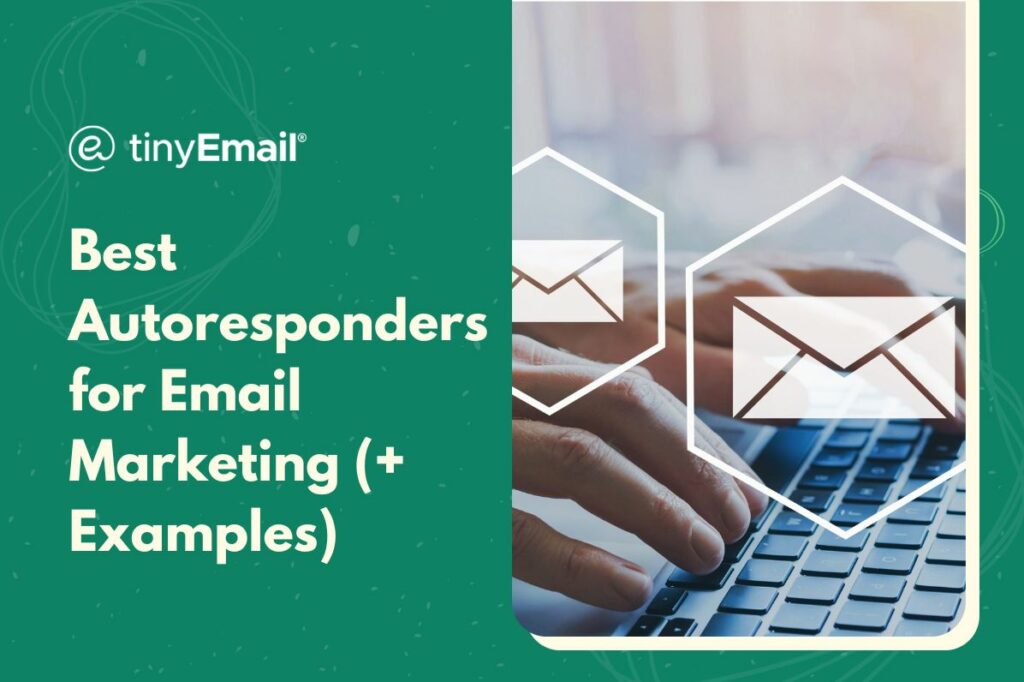An autoresponder email, at its core, is an automated email message that is sent to a subscriber in response to a specific trigger or action. As such, autoresponder emails are typically pre-written and scheduled to be sent out automatically when a certain condition is met. For example, a welcome email may be triggered when a new subscriber signs up for a newsletter, or a confirmation email may be sent when a customer completes a purchase.
Autoresponder emails are a useful tool for email marketing campaigns, as they can save time and effort by automating certain aspects of communication with subscribers or customers. This ensures timely engagement, limits the need for oversight, and standardizes the basic but highly important aspects of an email marketing campaign.
As a bonus, these emails can improve engagement and customer satisfaction by providing timely and relevant information, personalized recommendations, and exclusive offers. In other words, they benefit customers and businesses alike.
What Are Different Types of Autoresponders?
There are several types of autoresponders that can be used for email marketing purposes. Each has pros and cons, and should be used carefully by businesses. To decide which you need, and which are irrelevant to your aims, here are the most common ones to consider:
- Welcome autoresponder emails: These are used to send a welcome email to new subscribers when they sign up for your newsletter or other email list. The welcome email can include a message of appreciation, information about what to expect from future emails, and a call-to-action to persuade readers to engage with the brand or business.
- Confirmation autoresponder emails: These are used to confirm that a user’s request or action has been received and processed. For example, a confirmation autoresponder can be set up to send an email that confirms when a customer’s purchase has been processed and their order is on the way.
- Educational/autoresponder emails: These are a series of emails that are sent to subscribers over a period of time, with the goal of educating them about a product or service, building trust, and establishing authority. For example, a company may send a series of emails to introduce new customers to the different features of their upcoming product.
- Promotional autoresponder emails: These are used to promote a specific product, service, or offer to subscribers on an email list. For example, a company may send an email to subscribers announcing a sale or a discount on a particular product or service.
- Re-engagement autoresponder emails: These are used in an effort to re-engage subscribers who have stopped opening emails. A re-engagement email may include a special offer, a survey to gather feedback, or a reminder of the benefits of staying on the email list.
Autoresponder Emails from Successful Companies
To create great autoresponders that will keep your subscribers engaged, you should examine what the top brands are doing well. Here are examples of great autoresponder emails from successful businesses:
- Welcome email from Airbnb: Airbnb sends a friendly welcome email to new users when they sign up for an account. The email includes a personal greeting, a brief overview of the platform, and a call-to-action to start browsing listings. That helps to make a personal connection with the subscriber and entice them about what they can expect (and benefit from) going forward.
The reason this works is because, if a customer has signed up for emails from Airbnb, they have either already booked something or they are planning to. Sending information about how the platform works and the listings that are available is a great way to guide customers who are unfamiliar with navigating the site, keep customers on the site, and encourage them to either finalize their booking or manage their stay.
- Confirmation email from Amazon: Amazon sends a confirmation email to customers after they make a purchase. The email includes details about the order, estimated delivery date, and a reminder to track the shipment. This avoids leaving the customer in doubt on if the order was truly processed, and presents the brand as engaged and present.
This works because the information on the confirmation is important for the customer. With the confirmation email, they have an easy way to check out what they bought, how to track it, and when they can expect it. It also serves as a quick, easy receipt for future reference.
- Educational/autoresponder series from HubSpot: HubSpot sends a collection of educational emails to subscribers over a period of time. Each email covers a different topic related to inbound marketing, providing valuable information and tips for marketers to improve their strategies.
This works because people who use HubSpot are looking to improve customer service, sales, and marketing for their business. By providing subscribers with valuable information, the company is ensuring that they remain the number one choice in their subscriber’s minds for all things related to CRM (customer relationship management).
- Re-engagement email from Dropbox: Dropbox sends a re-engagement email to subscribers who haven’t used the platform in a while. The email includes a personalized message, a reminder of the benefits of using Dropbox, and a call-to-action to sign in and start using the platform again. This works to prevent lost leads and keep up-to-date with their subscribers.
Overall, re-engagement emails are always good, because they give the company insight into why a customer may have stopped engaging with the brand. They also bring their services back into the forefront with subscribers who have drifted off, ensuring they don’t get forgotten.
These are just a few examples of good autoresponder emails from companies. In general, quality autoresponder emails should be well-designed, personalized, and relevant to the subscriber’s interests and needs. They should also include clear calls-to-action and provide as much value to the recipient as possible.
By observing these best practices, and deciding on how your brand should engage with its subscribers, you can employ your own autoresponders to have better control (and connection) with your subscribers.


